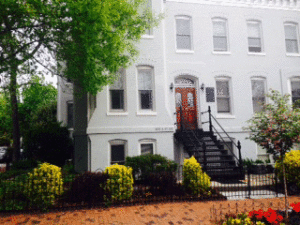The American Historical Association has announced a national search for a Programs Manager. This historian will coordinate the AHA’s overall history education portfolio, in addition to helping to develop, implement, and manage a set of complex, nation-wide projects. Our new colleague will assume primary responsibility for Career Diversity for Historians, which aims to broaden the career horizons and opportunities for History PhDs, oversee the AHA’s work relating to the integration of scholarship on teaching and learning into graduate education in history, and participate in the development of new initiatives.
 Over the past three years, the AHA’s four major grant-funded projects, which also include Tuning and the nearly completed Bridging Cultures, have all had some relationship to history education. Bridging Cultures focuses on professional development opportunities for community college faculty. Tuning, funded by the Lumina Foundation, has brought together historians from 65 colleges and universities to develop reference points for what a student should understand and be able to do at the completion of a history degree program, with each participant then working with colleagues to articulate and implement institutionally specific versions of that “discipline core” as a central aspect of the history major. Our participants have adapted both process and content to the cultures and imperatives of their institutions, and by the end of 2014 will have collectively mapped a landscape of outcomes and assessment tools useful to history faculty at two- and four-year institutions across the county. The 2015 AHA annual meeting (January 2-5 in New York City) will include a substantial workshop for an additional 100 faculty members interested in how Tuning might inform their department’s conversations about the history major.
Over the past three years, the AHA’s four major grant-funded projects, which also include Tuning and the nearly completed Bridging Cultures, have all had some relationship to history education. Bridging Cultures focuses on professional development opportunities for community college faculty. Tuning, funded by the Lumina Foundation, has brought together historians from 65 colleges and universities to develop reference points for what a student should understand and be able to do at the completion of a history degree program, with each participant then working with colleagues to articulate and implement institutionally specific versions of that “discipline core” as a central aspect of the history major. Our participants have adapted both process and content to the cultures and imperatives of their institutions, and by the end of 2014 will have collectively mapped a landscape of outcomes and assessment tools useful to history faculty at two- and four-year institutions across the county. The 2015 AHA annual meeting (January 2-5 in New York City) will include a substantial workshop for an additional 100 faculty members interested in how Tuning might inform their department’s conversations about the history major.
This emphasis on how the study of history prepares students at every level for a wide variety of roles in their communities and workplaces dovetails with the AHA’s commitment to promoting the role of history and historical thinking in civic culture. Career Diversity for Historians, funded by the Andrew W. Mellon Foundation, contributes to this imperative as well. We are entering the second phase of a project whose initial activities enabled us to explore the landscape of careers beyond the professoriate for history PhDs and chart a path defined by curricular and cultural change. The road will not be easy. To get to a point where a wide variety of forms and venues of employment will be considered successful outcomes for history PhD recipients will require attention to both culture and curriculum. Graduate programs, with assistance from the AHA if so desired, need to encourage students beginning at orientation to prepare for more than one career path. Much of this broader thinking is anything but a distraction from preparation for a college or university professorship. We have learned from our work thus far that many of the elements that prepare a history graduate student for a wider variety of career options also better prepare that student to be a member of a history faculty and to be a better teacher.
This expanded notion of preparation for a historian’s role as a faculty member and as a teacher arises as classrooms and curricula are being transformed by new research into how students learn, new opportunities for the use of technology, and pressure for assessment. If we don’t devise methodologies of assessment, others will do it for us, and graduate training needs to take this imperative into consideration. With funding from the Teagle Foundation the AHA has been exploring the possibility of integrating scholarship on teaching and learning into graduate education in history, thereby enabling our students to more effectively draw on resources available from the centers for teaching and learning that exist on nearly all research university campuses.
Other AHA history education projects—collaborations with partners as diverse as the National Council for the Social Studies, the Gilder Lehrman Institute, and the California Social Science History Project—focus on pre-collegiate classrooms. These involve curriculum enrichment, the use of digital tools, and general professional development. We are thinking, for example, about how to provide resources for K-12 teachers to enable them to more effectively integrate historical text into the nonfiction requirements of the new English Language Arts Common Core.
All of this work, and more, will keep our new colleague busy. The AHA Council members, and the staff at 400 A Street SE, generate more good ideas than we can possibly pursue. This is a good thing. It makes our work challenging, rewarding, and fun.
This post first appeared on AHA Today.
Tags: AHA Activities AHA Today
Comment
Please read our commenting and letters policy before submitting.






